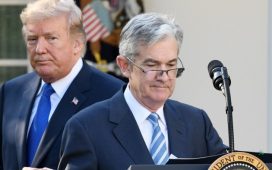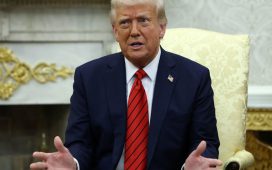Unlock the Editor’s Digest for free
Roula Khalaf, Editor of the FT, selects her favourite stories in this weekly newsletter.
“Planet Earth is big enough for the two countries to succeed,” said Xi Jinping, China’s president, as he met his US counterpart Joe Biden in San Francisco. It was one of several upbeat messages between the US and Chinese leaders as they made their clearest bid to stabilise ties since a bitter trade war erupted in 2018. Though it remains tentative, the indications are that the two men achieved at least the beginnings of a “reset” in relations that have slumped to their lowest ebb in 40 years.
More than four hours of talks delivered some key agreements. Most significant was China’s undertaking to reopen military-to-military communications channels that it shut down after the then US House Speaker Nancy Pelosi visited Taiwan in August 2022. Beijing said it would curb the export of chemicals used to make fentanyl, the potent synthetic opioid that has been linked to hundreds of thousands of deaths in the US.
There were signs of efforts, too, to reduce tensions over Taiwan. Xi is said to have voiced some “exasperation” over suggestions by US officials that China might use military action as early as 2027 to reunify the self-governing island with the mainland — and to have said there were no such plans. While Chinese officials have been unsettled by remarks by Biden that he would order the US military to defend Taiwan from a Chinese attack, the US president pointedly sidestepped post-meeting questions over whether he stood by those statements.
The US president’s reference in a press conference to Xi as a “dictator” highlighted the depths of the distrust between the two sides — and the risks that progress could still unravel. For now, though, both countries have compelling reasons to attempt to put relations on a firmer footing.
For the US, stabilisation with Beijing has become increasingly desirable as Washington finds itself grappling with wars in both Ukraine and the Middle East. Concern that the Israel-Gaza conflict could escalate into a broader regional conflagration has led US officials to see China as a potential moderating influence over key regional actors, above all Iran.
On top of the deteriorating geopolitical situation, China has been unsettled by mounting economic problems at home, including slowing growth, local government debt, a faltering property market, and what is set to be the first fall in foreign direct investment this year for 25 years. Beijing has become convinced that it needs to court foreign business communities more assiduously. Xi’s visit included an appeal to a 300-strong US business audience, extolling the opportunities of the Chinese market.
Relations are not set to improve overnight. A resurgence of western investment in China is unlikely if Beijing continues to engage in what are seen as unfriendly actions, such as raids on US consultancy firms. US officials will be watching closely to see if China actively follows through on its pledge to curb the trade in fentanyl precursors. The return of military communication between the two sides is only a first step in rebuilding confidence, though it allows for a minimal level of conflict avoidance.
There are opportunities to build on this week’s progress with further efforts to co-operate on climate at the coming COP28 conference, and on containing regional conflicts. Further flare-ups, such as the diplomatic storm over the Chinese “spy” balloon over the US that derailed a hoped-for reset earlier this year, may be unavoidable. Yet the Biden-Xi meeting provided encouraging signs that both sides are attempting to manage relations despite their deepening strategic rivalry. If they are to avoid eventual conflict, that is the only option they have.







